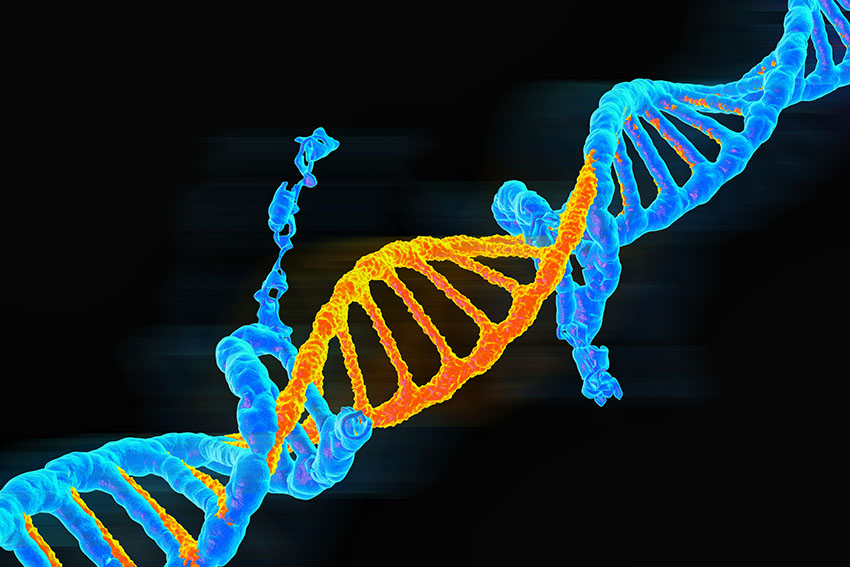Batten Disease: Symptoms, Cause & Treatment
What are the symptoms of Batten disease?
Batten disease, also known as neuronal ceroid lipofuscinosis (NCL), is a rare, inherited neurodegenerative disorder that primarily affects children. The symptoms of Batten disease can vary depending on the specific type and age of onset, but the most common symptoms include:
- Vision problems: One of the earliest signs of Batten disease is vision impairment, which can progress to complete blindness over time.
- Seizures: Seizures, including myoclonic jerks (brief, involuntary muscle twitches or jerks), are common in Batten disease patients.
- Cognitive and motor skill decline: As the disease progresses, children experience a gradual decline in cognitive abilities, including learning, memory, and problem-solving skills. They may also experience a loss of motor skills, leading to difficulties with walking, speaking, and coordination.
- Behavioral and psychiatric disturbances: Patients may exhibit changes in behavior, such as aggression, anxiety, depression, or mood swings.
- Sleep disturbances: Batten disease can cause sleep problems, including insomnia or excessive daytime sleepiness.
- Loss of developmental milestones: Children with Batten disease may experience a regression in developmental milestones, such as the ability to sit, stand, or walk.
- Seizures: Seizures, including myoclonic jerks (brief, involuntary muscle twitches or jerks), are common in Batten disease patients.
- Feeding and swallowing difficulties: As the disease progresses, some patients may experience difficulties with feeding and swallowing, leading to potential weight loss or malnutrition.
- Respiratory issues: In later stages, patients may develop breathing problems or respiratory infections due to the progressive neurological deterioration.
The age of onset and the rate of progression can vary depending on the specific type of Batten disease, with some forms presenting symptoms in infancy or early childhood, while others may not appear until late childhood or adolescence.
It’s important to note that Batten disease is a rare and complex disorder, and the symptoms can overlap with other neurological conditions. A accurate diagnosis often requires a combination of clinical evaluation, neurological testing, and genetic analysis.
What are the causes of Batten disease?
Batten disease is caused by mutations in specific genes that lead to the buildup of lipopigments (lipofuscin) in the body’s tissues, particularly in the brain and eyes. The accumulation of these lipopigments ultimately leads to the progressive neurological symptoms associated with the disease.
The specific genetic mutations that cause Batten disease are inherited in an autosomal recessive pattern, meaning that an individual must inherit two defective copies of the gene, one from each parent, to develop the condition.
The different types of Batten disease are classified based on the specific gene mutation involved:
- CLN1 gene mutation: Causes infantile neuronal ceroid lipofuscinosis (INCL), the earliest and most severe form of Batten disease, with symptoms typically appearing between 6 months and 2 years of age.
- CLN2 gene mutation: Causes late-infantile neuronal ceroid lipofuscinosis (LINCL), with symptoms usually appearing between 2 and 4 years of age.
- CLN3 gene mutation: Causes juvenile neuronal ceroid lipofuscinosis (JNCL), the most common form of Batten disease, with symptoms typically appearing between 5 and 8 years of age.
- CLN5, CLN6, CLN7, CLN8, CLN10, CLN12, and CLN14 gene mutations: Cause variant late-infantile, juvenile, or adult-onset forms of Batten disease, with symptoms appearing at different ages depending on the specific gene mutation.
While the exact mechanisms by which these genetic mutations lead to the accumulation of lipopigments and the subsequent neurological damage are not fully understood, researchers believe that the defective genes disrupt the normal processes of protein transport and recycling within cells, leading to the buildup of lipopigments over time.
Batten disease is not contagious and is solely caused by genetic mutations inherited from both parents. Early diagnosis and genetic testing are crucial for proper management and potential treatment options, which are currently limited but actively being researched.
What is the treatment for Batten disease?
Unfortunately, there is currently no cure for Batten disease, which is a fatal neurodegenerative disorder. However, there are several treatment options available that can help manage the symptoms and potentially slow the progression of the disease. The treatment approach is typically multidisciplinary and depends on the specific type and stage of Batten disease.
The main treatments for Batten disease include:
- Enzyme replacement therapy (ERT): For certain types of Batten disease, such as CLN2 disease, enzyme replacement therapy can help replace the missing or defective enzyme responsible for the disease.
- Gene therapy: Researchers are investigating the use of gene therapy to introduce functional copies of the defective genes responsible for Batten disease.
- Antiseizure medications: Anticonvulsant drugs may be prescribed to control seizures, which are common in Batten disease patients.
- Physical, occupational, and speech therapy: These therapies can help maintain physical abilities, mobility, and communication skills for as long as possible.
- Vision aids: Devices such as magnifiers, large-print materials, and mobility aids can assist with vision impairment, which is a common symptom in Batten disease.
- Behavioral and psychological support: Counseling, behavior management strategies, and medications may be used to address behavioral and emotional challenges associated with the disease.
- Nutritional support: As the disease progresses, patients may require feeding tubes or other nutritional interventions to maintain adequate caloric intake and prevent malnutrition.
- Palliative care: In the later stages of Batten disease, palliative care focuses on managing symptoms and providing comfort to improve the patient’s quality of life.
While these treatments may help manage symptoms and potentially slow the progression of the disease, they do not cure Batten disease. Early diagnosis and intervention are crucial, as the disease is progressive and irreversible.
Researchers are actively working on developing new treatments, such as gene therapy and small molecule therapies, which show promise in targeting the underlying genetic causes of Batten disease.




